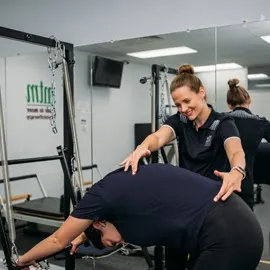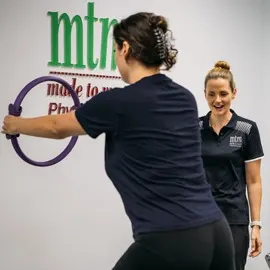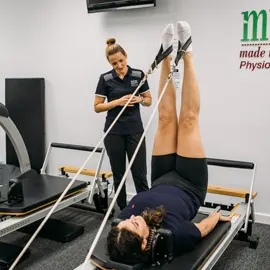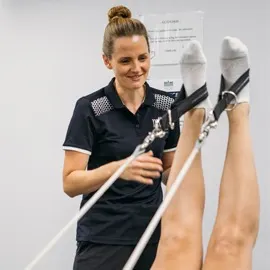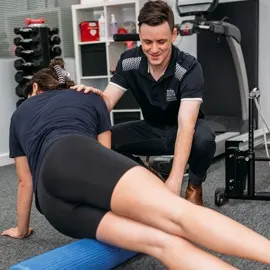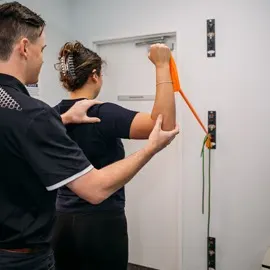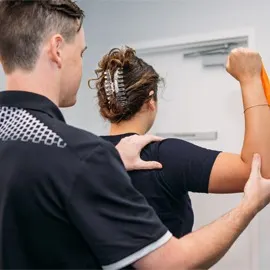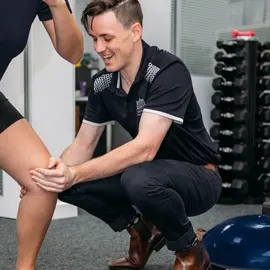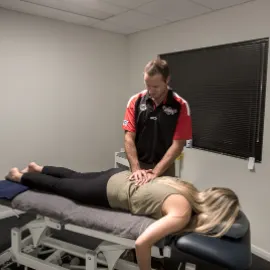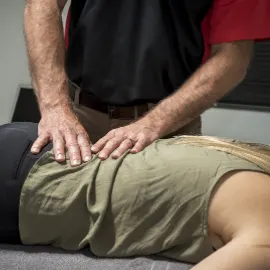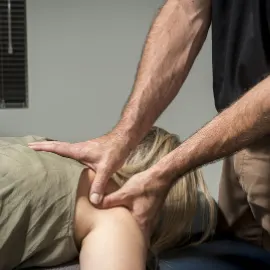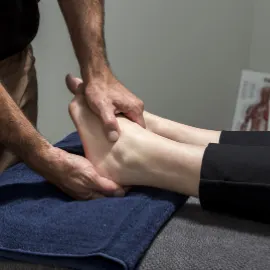Osteoporosis and Exercise
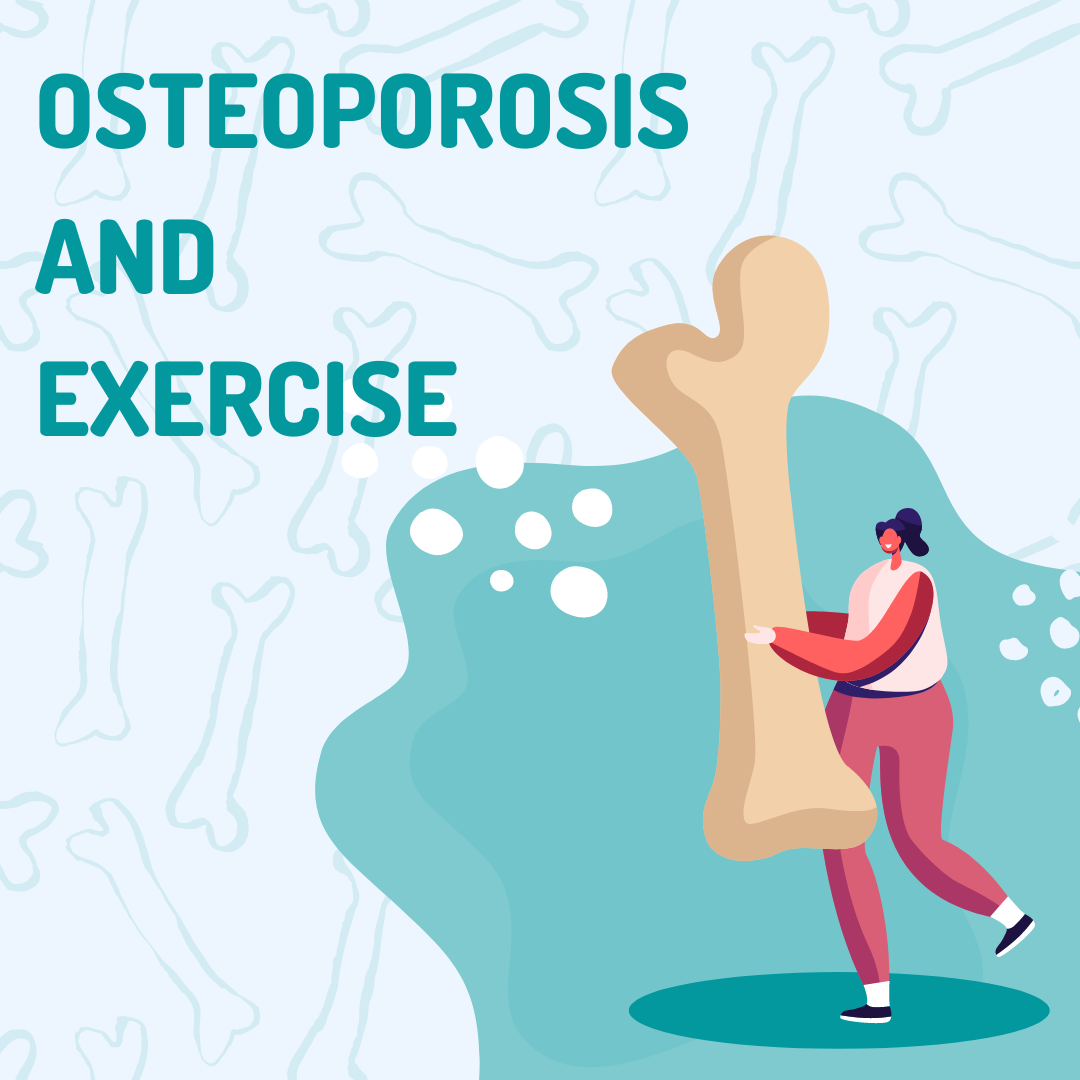
Osteoporosis is often referred to as the ‘silent disease’ as there are generally no signs or symptoms until a fracture occurs. This is why it is important for people to know if they are at risk and how to prevent the onset of osteoporosis.
Risk factors for osteoporosis:
Women are more likely to have osteoporosis then men, especially postmenopausal women.
Family history of osteoporosis
Advanced age
Lack of physical activity, especially when young as you reach your peak bone mass in your 20s
Chronic smoking and excessive alcohol consumption
Low calcium and Vitamin D
Long term use of certain medications (e.g. corticosteroids)
Exercise can help prevent osteoporosis by increasing bone mass and slowing normal age-related bone loss. Impact activities such as jogging, walking, skipping, stairs, aerobics, tennis and strength training all put healthy stress through the bones and cause them to restructure stronger than before.
Once you have been diagnosed with osteoporosis the main role of exercise is to reduce the risk of falling and sustaining fractures.
It is important to be proactive when it comes to falls prevention as someone is admitted to hospital with an osteoporotic fracture every 5-6 minutes and fractures can lead to long term disability and reduced quality of life. Encouragingly there is extensive evidence to demonstrate that falls are preventable and that exercise can play a big part in this.
Exercise programs that are designed by trained professionals such as Exercise Physiologists for people with osteoporosis should include a variety of:
Specific and challenging balance exercises to reduce the risk of falls: Exercises should be progressed regularly and completed over an extended period of time for best results. Classes such as Tai Chi also prove effective.
Strengthening exercises that focus on your postural muscles: Individuals with osteoporosis often adopt a slumped and hunched posture which can interfere with balance and walking technique.
Resistance (strength) training to increase muscle mass: Increasing lower leg strength will help improve your balance and reduce your risk of falling.
At MTM Rehabilitation Gym our Exercise Physiologists are experienced in working with people with osteoporosis (pre and post fractures) and can help you stay fit and healthy despite your condition.
References
Osteoporosis Australia www.osteoporosis.org.au
Osteoporosis Australia. The burden of brittle bones 2007
ESSA Position Statement on Exercise and Falls Prevention in Older People 2011
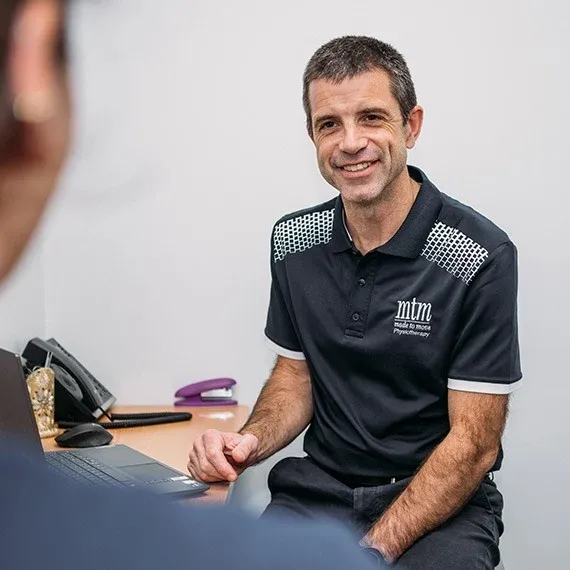
Ask a Physio
Not sure whether you are appropriate for Physiotherapy?
Fill out the form and one of our physiotherapists will be in touch with you within 24 hours.











